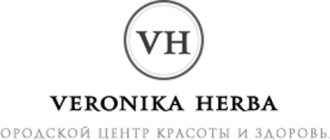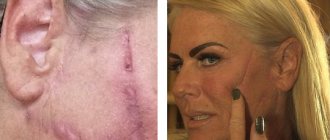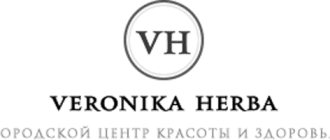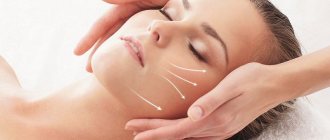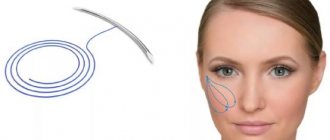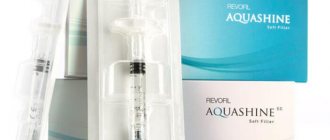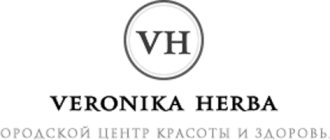Thread lifting quickly solves various aesthetic problems; Suitable for both women and men. Subcutaneous implantation of threads for a facelift is the optimal choice for patients under 50 years of age, when the first signs of age-related changes become noticeable: bags under the eyes, wrinkles on the forehead and near the eyes, sagging skin in the cheek area, pronounced nasolabial folds and in the mouth area, blurred facial contours . Thread face lifting is a smart choice if you don’t need a radical correction, are afraid of pain, and don’t have time for a long recovery. Compared to plastic surgery, the thread lifting procedure, that is, reinforcing the skin with threads, is low-traumatic and safe (the term “reinforcement” is borrowed from construction theory and means strengthening from the inside with a frame of fibers that are inserted under the skin along certain mesh lines).
A visible and natural result is ensured by the mechanical fixation of skin tissues with special, thinnest threads, and the long-term effect is ensured by their appearance and composition.
The risk of complications after a facelift with threads is low, the manipulation itself takes no more than an hour. The first days are characterized by swelling; complete tissue restoration takes about a month and a half; no scars remain. The result with a cumulative effect over several months lasts up to 5 years
What is used for the lifting procedure
Special guide needles and sterile biocompatible threads are used to gently tighten the skin of the face and other areas, meaning that when inserted they do not cause rejection, allergic or immune reactions. Threads differ in type, composition, texture, method of placement and fixation in tissues. When choosing a base material for lifting, it is best to trust a doctor who will take into account your wishes and body characteristics.
Next, we will help you navigate the variety and effectiveness of threads that are used for anti-aging procedures.
Face lift threads. Features of their use
Non-absorbable threads for lifting - suitable for correcting pronounced sagging skin and eliminating age-related defects. Previously, for reinforcement purposes, wires made of inert precious metals that were not rejected by the body were widely used: gold and platinum of the highest standard. The once popular gold thread reinforcement technology has given way to newer developments. Now cosmetologists prefer innovative polymer bases in face lift threads. The key substance in their composition is polypropylene, a material with pronounced strength and wear resistance; Teflon is less commonly used. Such non-degradable polypropylene or Teflon threads guarantee visible tightening for up to 5 years: lying deep enough, they effectively tighten and hold the surface and middle layers of tissue.
Most often, non-absorbable foundations are recommended for patients with obvious age-related changes who have not exceeded the age of 50. It should be taken into account that the introduction of such threads imposes restrictions on the use of a number of hardware cosmetology techniques in the future.
Get an online consultation
right now.
Get
Aptos threads are common . At the moment, the Aptos thread is recognized as the most effective in the world of cosmetology. Thanks to the thickness and shape of the threads, the Aptos facelift is able to reliably lift and fix the subcutaneous layers and combat ptosis (sagging of soft tissues due to weakened muscle function). The Aptos line has a wide selection of fibers in composition and texture (kogi - notched, and spiral cut) depending on the area that needs to be corrected.
Aptos threads for face lifting are non-absorbable - these are polypropylene aptos threads, and absorbable - biodegradable aptos threads made of caprolactone, which promotes enhanced collagen production.
, Teflon Gore-Tex threads are similar to aptos (they also belong to the category of non-biodegradable threads), but they are not so widespread.
Self-absorbable lifting threads, subject to biodegradation, form a framework, stimulating the skin's natural support through the production of collagen or hyaluronic acid. They are not suitable for severe ptosis and are more suitable for middle-aged patients. The effect lasts up to 2-3 years. Self-absorbable threads are currently divided into categories based on their qualitative composition - caprolon/caprolactone, polydioxanone, polylactic acid.
Polydiaxonone ( mesothreads) for face lifting are largely recommended for the prevention of age-related changes and to combat the initial manifestations of aging; face lifting with mesothreads is recommended for patients under 35-40 years of age. The technology came from South Korea. The thinnest of all those used, mesothreads for the face are installed shallowly, at the level of the hypodermis, that is, directly in the skin. The effectiveness of mesothreads is primarily related to the effect on tissue structure: they additionally enrich the layers of facial skin with lactic acid, which can significantly increase collagen synthesis. The mesothread lifting procedure stimulates biological reactions in the skin, under the influence of which revitalization or tissue rejuvenation occurs.
Separately, sometimes as an alternative to traditional thread lifting, reinforcement with liquid safe threads (or biothreads) is considered. The mechanism of action is the same self-resorption of the base with the subsequent formation of a collagen framework of the face. Liquid threads for the face have a safe and natural composition close to the body tissues, “locked” in a gel-like structure.
This operation is distinguished by its technology: a composition of hyaluronic acid and zinc oxide is injected under the skin with a syringe with a very thin needle, which gradually hardens and forms a stable subcutaneous mesh frame, smoothing out wrinkles. Liquid threads are gradually eliminated from the body. Of course, they give the mildest effect in comparison with other methods, but they cannot correct pronounced problems caused by age. The result after injection under the skin lasts up to 3 years - innovative liquid threads for the face, even when removed, continue to “work”.
Polylactic threads are made of polylactic acid - this is a special fiber that promotes tissue regeneration and slows down aging by activating cellular renewal. Lactic acid is a natural substance, an unchanged and important participant in many biochemical processes in the body, which is produced almost every second as a result of the breakdown of sugars. Many experts recommend polylactic threads for the first tightening procedure and for slowing down skin aging after 30 years. It is also important that after the installation of the threads and the end of the rehabilitation period, it is possible to carry out any cosmetic and aesthetic procedures without restrictions.
In the category of polylactic acid-based products injected under the skin, we can highlight the increasingly popular Resorblift threads. The French developed the methodology for working with them; Then America, European and Asian countries, and Russia joined the use of these polylactic fibers - in our country these threads have been used for more than 6 years. After injection under the skin, the acid begins to gradually dissolve, stimulating the active production of natural collagen, the fibers of which gradually replace the threads and form a new frame. Such assistance in rejuvenation through the natural processes of regeneration of the body is as natural and reliable as possible.
Combined lifting threads are a hybrid of absorbable and non-absorbable. These cosmetic lifting fibers are based on polypropylene and polylactic acid. As a rule, these are conical threads that appeared 5 years ago and are already quite well known in the cosmetology services market.
Local contraindications
Cosmetologists warn of two cases when the condition of the skin in certain areas does not allow mesothreads to be applied.
- Pigment formations. It is prohibited to inject through moles. It is forbidden to injure them with a needle, because such an action can cause their further growth. This applies to all neoplasms: they can become malignant.
- Infectious and inflammatory processes. Intradermal injections into areas that have signs of a viral or bacterial skin disease can cause the spread of this infection. Before the procedure, it is important to cure the skin, completely eliminating areas of inflammation.
Threads for lifting by texture and profile
- Smooth (linear). They were the very first in this area and continue to be used. Well suited for moderate correction of problem areas. Experts are implementing this solution to correct the chin, cheekbones, and forehead. To fix the threads, cuts up to 5 mm are made.
- With notches (kogi threads) . They contain hooks (notches similar to jagged hooks), which help secure the threads in the surrounding tissues. They can be used to correct various anatomical areas - chin, jowls, nasolabial wrinkles, and the notches are different for each area of the face. In order to tighten the oval of the face, you need fewer of them. Also, lifting with kogi threads lasts longer than when done with smooth ones. They are introduced into the subcutaneous layers to a depth of 4-5 mm through micropunctures. Within six months to a year they dissolve, being replaced by collagen.
A typical example of a notched material is aptos thread. For example, the doctor will suggest such innovative fibers for face lifting as Dermafil Happy Lift (dermafil). The Italians produce their line of absorbable caprolactone kogi threads using patented technology (the characteristic notches applied have brand differences). Development for cosmetology and plastic surgery came to Russia after successful experience of use in Europe and Asia. The thread has gained greater strength and is securely attached to the fabrics. It takes a year to a year and a half for it to completely resolve. Being replaced during this period by a synthesized collagen framework, the material provides a tightening correction result.
- Spiral threads will provide a strong effect of lifting and modeling the oval of the face. These are more elastic and dense shortened threads, subject to returning to their previous state after tension. They are often combined with other varieties to obtain a better thread-lifting effect. Almost irreplaceable for patients with thin skin. Thus, the “classic” aptos threads are just spiral threads. The spring threads reliably hold the skin and take root well. One of the most elastic. For this reason, flexible spring threads are recommended for modeling the most mobile areas of the face: nasolabial folds and cheeks.
- Conical - a type of thread with cone-shaped knots evenly distributed along the length, which help them to be fixed in the tissues. This is a combined thread formed from dissolving cone elements and a non-absorbable base. About a year after implantation, the cones completely disintegrate, and the base fiber firmly holds the skin tissue.
The most famous product is Silhouette Soft conical threads. This is an American-made absorbable material (polylactic acid is a key element of the composition). It has a fixed length measuring 36 cm. The 8 cones are positioned to hide the nodules, remaining invisible under the skin, and at the same time secure the soft tissue in the desired position in the areas that are subject to lifting.
The doctor will advise which type of threads for a facelift or lifting should be chosen, based on the individual and age characteristics of the patient and his state of health.
Contact Dr. Begma’s clinic, and during a face-to-face consultation, they will choose the best way to solve your aesthetic problems.
Recovery after the procedure
After a facelift with threads, the puncture sites are isolated with a plaster for several days. During the recovery process, you should adhere to the following recommendations:
- do not touch your face with your hands;
- do not take hot baths or showers;
- sleep on your back;
- use a special product to care for puncture sites;
- do not wet puncture sites with water;
- Do not drink too hot drinks.
Also, for two weeks after the procedure, you should not visit swimming pools, baths and saunas, minimize physical activity and exposure to direct sunlight on the skin.
Side effects
Carrying out reinforcement in a trusted clinic by a qualified, experienced doctor reduces the risks of unforeseen effects. Implantation of monofilaments requires practice and professionalism; the material is very thin and can break if subjected to strong tension.
Possible side effects:
- swelling, hematomas go away on their own within a few days, with a longer recovery they are caused by problems with blood clotting;
- bruises appear when the technique is violated;
- pain persists for 3–4 days; to eliminate discomfort, the doctor may prescribe painkillers;
- facial asymmetry is corrected by repeated correction, caused by a medical error;
- irregularities and tubercles are observed when the threads are inserted incorrectly;
- lack of results can occur if the number of implanted threads is insufficient.
Attention! The inflammatory process occurs when sterility conditions are not observed during the procedure or when hygiene standards are violated by the patient during the rehabilitation period.
How is the mesothread inserted?
The introduction of 3D mesothreads is quick and almost painless. Before the procedure, the skin is lubricated with a special anesthetic cream. Each thread is stored in a sterile package, attached to the thinnest needle made of flexible medical steel.
The cosmetologist determines the required number of different types of threads, and then stitches them through the skin, inserting needles to a certain depth. During the inspection, the type of threads, zones and number of insertions are determined. As a result, a kind of supporting frame is created that tightens weakened skin, modeling the contours of the face and body.
What effect should you expect?
Mesothreads tighten tissues and hold them in the desired position immediately after implantation. The main result is achieved after 2-3 months, due to the growth of a collagen framework around the strings. It depends on the individual characteristics of the patient - how quickly the processes of tissue regeneration occur. If collagen synthesis is slow, the effect of the procedure will be minimal.
The result is also influenced by the qualifications of the cosmetologist and the degree of development of side effects and complications after the procedure.
Advantages of mesothreads
Today, mesothreads in St. Petersburg are one of the most popular methods of rejuvenating the face and body. Facelift with mesothreads has a number of undeniable, practice-proven advantages:
- the introduction of threads does not leave marks on the skin, and after six months polydioxanone is completely absorbed by skin tissue;
- the procedure takes on average from 30 minutes to an hour;
- rejuvenation with mesothreads has a pronounced prolonged effect;
- the introduction of threads is practically painless, the consequences in the form of slight swelling or bruising disappear a few days after the procedure;
- mesothreads do not interfere with other hardware procedures.
Today, 3D mesothreads are the best materials for modeling weakened and lost elasticity of the skin of the face and body.
What are mesothreads made of?
Polydioxanone is used for production. This is a modern suture material used by surgeons around the world when suturing soft tissue. It dissolves within tissues within 180-210 days, does not cause allergic reactions, and is non-toxic. Polydioxanone has high tensile strength. When resorbed, it causes the formation of fibrinous connective tissue.
It is widely used in plastic surgery, gastroenterology, urology, gynecology, for applying skin and subcutaneous sutures.
Patient reviews
There are mostly positive reviews about the procedure on the forums.
The user writes about the good results of a facelift and the elimination of a double chin, a gradual increasing effect.
The user writes about threads appearing when facial expressions change.
The review states that for thin threads, it is better to carry out biorevitalization before thread lifting.
The participant writes about the long recovery period and the lack of results.
Preparation
Mesothreads for face lifting are installed only on those patients who have completed all stages of preparation for this cosmetic procedure.
In this case, you will need to perform the following steps:
- undergo an initial examination by a cosmetologist;
- take a blood test for general indicators, as well as infectious diseases (HIV, syphilis);
- 4 days before visiting the doctor, stop drinking alcohol;
- 48 hours before the scheduled facelift procedure, avoid physical fatigue of the body, as this will weaken the functions of the immune system;
- the last cigarette smoked should be no later than 1 hour before the start of the injection of mesothreads;
- A week before a facelift with cosmetic threads, you must stop taking medications that affect blood clotting.
Women who are undergoing drug therapy for chronic or acute diseases of the body should inform their cosmetologist about what medications they are taking.
It is recommended to postpone the procedure for installing mesothreads for those patients whose menstruation began on the appointed day of the facelift. Against the background of unstable levels of sex hormones, the risk of complications increases.
Opinion of cosmetologists
On forums, cosmetologists share their experience in installing mesothreads.
The review describes how to get rid of severe ptosis; therapy includes the use of threads.
The participant writes that the implantation of mesothreads could not lead to dysfunction of the upper lip.
The user writes about the recovery features and pain of reinforcement with different types of materials.
